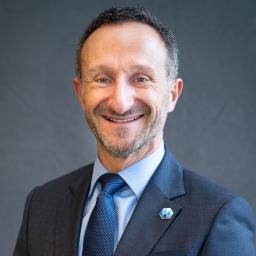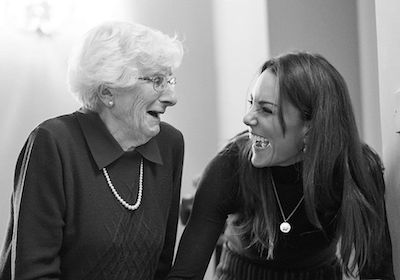While looking into various graduate school options, I learned a lot about the difference between PhD and EdD programs, including the difference between a producer and a consumer when it comes to educational goals. EdD programs, while requiring real research towards a dissertation, have an overarching goal of graduates who are consumers of research. To that end, they focus on properly reading, analyzing, questioning, and understanding educational research. PhD programs, on the other hand, focus on creating producers of research, and for this reason there is considerably more time spent on setting up a good study and properly conducting original research. This distinction has stuck with me, and I believe it is a good lens to help us examine educational outcomes in much younger students.
As a teacher, administrator, and now coach/consultant, I have spent more than 20 years working with Jewish high school students, teachers, and curriculum. By looking at our approach to educational goals on a high school level, we can readily see the power of using the producer lens to drive more sophisticated teaching and learning. When it comes to teaching English, we readily accept that there is a need for students to be producers, rather than just consumers. We expect them to write their own analysis and thoughts, not just read the analysis and thoughts of others. We include a goal that they are able to verbally express themselves, and not just understand the spoken word.
A recent meta-study found that when 6-12 grade students are taught writing strategies, it improves not only their writing skills but also their reading skills. This demonstrates an important outcome of the producer lens. Making sure students can produce good writing means they also improve at consumption: reading.
This powerful lens, that seems relatively obvious when we approach English, vanishes when we look at other areas of study. Why not broaden this lens?
Hebrew
An oft-repeated complaint about Jewish day school is that, despite many years of language instruction, students still can’t speak Hebrew. If we use the producer vs. consumer lenses, we can ask what the educational goals of Hebrew are in our schools. Is the purpose for students to be good consumers of Hebrew, able to understand and read? Or (as our disappointment seems to indicate) do we expect students to be producers of Hebrew, writing original essays and expressing themselves verbally in Hebrew?
Our oldest daughter switched schools after second grade, and I saw this distinction in action. In her kindergarten, she was fully immersed in Hebrew, with one of the teachers only speaking Hebrew with the children. This continued in first and second grades, where she had a significant portion of the day in Hebrew class; not only did the teacher speak only in Hebrew, but the students were also expected to be able to express themselves in Hebrew. During those years, our daughter was a confident Hebrew speaker, even though she still had a very limited vocabulary. She would approach native Israeli kids her age and converse with them as a producer of Hebrew.
In her schools since, there is a focus on consuming Hebrew (reading and understanding dialogue, comprehending Hebrew paragraphs, etc.), and although her understanding of Hebrew is reasonable, as she graduates high school, she struggles to speak Hebrew at all.
STEM
At first glance, math is not an area where students can fairly be able to produce. Can we really expect students to come up with original math proofs or theories? We usually have goals of making students good consumers of math, able to solve problems similar to the ones we have already demonstrated. The one high school course (with the exception of calculus that not all students take) where we do have a goal of students as producers is geometry, where students construct proofs. However, many schools and curricula seek to minimize (or even excise) this aspect of geometry, since students struggle with it. The producer lens encourages us to consider how to prepare students for this type of thinking more effectively so that they embrace production by the time they get to high school geometry, rather than avoiding it.
Production is far more natural in the areas of science and technology. PBL (problem-based learning) is an example of an approach that utilizes the production lens, allowing students to learn content while trying to create something to improve a situation or solve a problem. For example, one of my children had a STEM unit in high school where she needed to come up with a new device that would address an unmet social or medical need in the world. Students needed to create a prototype within a specific budget, learn rudimentary soldering to put the prototype together and enough coding to program the device to function properly. This approach both raised the expectations for students and helped them appreciate the relevance of STEM, even for those who had less natural interest in these subjects.
History
History is another area that would benefit from the producer lens. In my experience, at best, we tend to settle for students who graduate high school as intelligent consumers, detecting bias in perspectives and analyzing original documents in an informed way. This level of consumption is nothing to take for granted. But how would a producer lens change these goals?
Even the production we currently see in history classes is often “look this up and then tell us about it.” Would using a producer lens have us striving to give students more skills to analyze documentation on their own and produce clear position pieces of their own? Perhaps we would deploy more assignments and assessments similar to the Document Based Questions (DBQs) that are frequently part of the AP History exams. DBQs ask students to analyze historical documents and explain a part of history using their own knowledge coupled with their in-the-moment analysis of these supporting documents. Broadening the producer approach to non-AP classes, and even middle school, would be a way to apply this lens in enhancing educational outcomes.
Judaics
When it comes to teaching Judaics, I believe this lens is helpful as well. We are frequently underwhelmed by the level of comfort and ability our children display in navigating Jewish texts. In many Modern Orthodox schools, we rely on a year or two in Israel to get at least some students closer to proficiency. Let’s reexamine our goals through a producer lens.
Do we want our children to be able to understand a dvar Torah or be able to create and deliver a dvar Torah? If we want our children to be able to create, then structuring lower school parshah instruction as an experience of listening to the parshah explained each year and then demonstrating knowledge by relaying that information at home or answering questions will not build towards accomplishing that goal. More broadly, don’t we want our children to feel connected to Torah and create their own meaning? Don’t we want them to be producers, rather than just consumers, in the area of meaning-making? Perhaps students could identify what is meaningful to them in the text and then make connections.
In addition to the meta-level of connecting to Torah and the meso level of a skill like giving a dvar Torah, we can also use this lens for the micro level of a specific textual skill. For example, in teaching Chumash, we want students to understand Rashi’s questions. What might production look like here? Perhaps students could be taught to create their own questions about the text and then analyze the strengths and weaknesses of possible explanations.
There are high school Chumash classes where this is happening, and I wonder if the lens of producer can be used in earlier years of Chumash as well. An objection may be that getting them to be consumers is hard enough; but perhaps, as we see in English, if we had a goal of producer, it would change our pedagogy, not only making this new goal attainable but creating more meaningful connection and meaning-making along the way.
The producer lens is a powerful way to set educational goals that raise the quality of student outcomes. Each of these curricular areas (and more) would benefit from more discussion and analysis to discover what we’d like our students to be able to produce when they complete their K-12 schooling. Using the producer lens to envision the portrait of a graduate will strengthen the skills of such a graduate as well as their ownership of their learning. The producer lens will also enhance our approach to the scope and sequence of developing these skills and abilities as we envision the scaffolding, instructional tasks, and assessments needed at each grade level to accomplish these goals.





 I keep thinking about the portrait she took and what it represents. The staging and lighting of the photograph were designed very specifically by the Duchess to capture this unique moment. A survivor of World War II with her 11-year old granddaughter, light streaming in from the hopeful east, wartime artifacts (my mother’s German identity card, marked with a “J” for Jude-Jew) shared across the generations. The photograph is very much a moment in time, a moment that marks time, bridging the past with the future. The image captures the gaze of a young girl learning through the shared experience of her grandmother, committed to re-telling that story in order to learn its lessons.
I keep thinking about the portrait she took and what it represents. The staging and lighting of the photograph were designed very specifically by the Duchess to capture this unique moment. A survivor of World War II with her 11-year old granddaughter, light streaming in from the hopeful east, wartime artifacts (my mother’s German identity card, marked with a “J” for Jude-Jew) shared across the generations. The photograph is very much a moment in time, a moment that marks time, bridging the past with the future. The image captures the gaze of a young girl learning through the shared experience of her grandmother, committed to re-telling that story in order to learn its lessons. So this Tu Bishvat, while I still chuckle at the thought of my mother rubbing shoulders with royalty, I appreciate how the day’s focus on trees and marking time can catalyze a deeper appreciation for the relationship between past and future. And I give thanks, both for the trees which beautify our world, and the hundreds of Jewish day schools in which tens of thousands of Jewish futures are growing to fruition.
So this Tu Bishvat, while I still chuckle at the thought of my mother rubbing shoulders with royalty, I appreciate how the day’s focus on trees and marking time can catalyze a deeper appreciation for the relationship between past and future. And I give thanks, both for the trees which beautify our world, and the hundreds of Jewish day schools in which tens of thousands of Jewish futures are growing to fruition.








